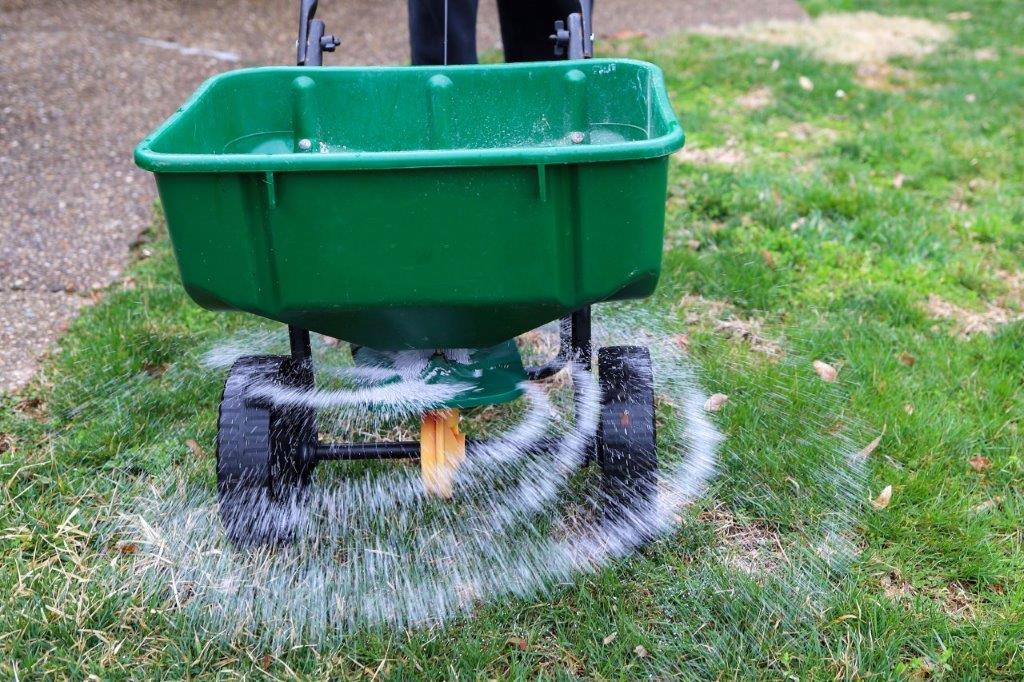Spring time fertlilising
Author: Stefan Palm Date Posted: 24 September 2025
Spring is the ideal time to fertilise your lawn. Discover when to apply fertiliser, the best nutrient balance for strong growth, and why Paul Munns Greenkeeper is the perfect choice for a healthy, green lawn.
In Short
Spring is the best time to fertilise your lawn in South Australia, with early to mid-October usually being the sweet spot. Warmer soil temperatures and seasonal rain help lawns wake up from winter dormancy and start strong for the growing season. Use a complete mineral fertiliser (like Paul Munns Greenkeeper) that delivers nitrogen, phosphorus, potassium, and trace elements, alongside organic ingredients to improve soil health.
Why Spring Fertilising Matters
During winter, many lawns slow down or go completely dormant. Growth stalls, leaves may yellow, and the lawn’s energy reserves are largely used up just to survive the colder months. As spring arrives, lawns need a boost of nutrients to kick back into gear.
Think of spring fertilising as breakfast for your lawn. After a long “fast” over winter, the grass needs food to get going. Warmer weather and seasonal rains combine with fertiliser to create the perfect conditions for rapid recovery and growth.
If you fertilised in autumn, your lawn likely stored some nutrients in a crystallised form. These reserves help during the cooler months but are mostly depleted by October. By waiting until now to fertilise, you allow the lawn to use up what was left from autumn before replenishing with fresh nutrients.
Choosing the Right Fertiliser
Not all fertilisers are equal. For spring, your lawn needs quick access to essential nutrients, so a complete mineral fertiliser is recommended. Organic fertilisers are fantastic for building soil structure and microbial activity, but on their own, they don’t provide enough readily available nutrients to meet the demands of a lawn coming out of dormancy.
The Ideal Fertiliser Analysis for Spring
Check the label on the back of the fertiliser bag — this is called the fertiliser analysis. For spring, aim for a blend similar to the following:
-
Nitrogen (N): ~12%
Nitrogen is the engine behind leafy growth and green colour. Without it, lawns become pale, thin, and vulnerable to weeds and disease. Nitrogen drives density, which helps the lawn outcompete weeds naturally. -
Phosphorous (P): ~2%
Phosphorous works behind the scenes, helping the lawn convert sunlight into usable energy. It strengthens the root system and supports overall vigour. -
Potassium (K): ~6%
Potassium builds resilience. It strengthens cell walls, improves water uptake, and equips your lawn to withstand summer heat and stress. -
Trace Elements
Small amounts of iron (1–2%) and micronutrients such as zinc, copper, boron, molybdenum, and manganese are like vitamins for your lawn — they help with colour, disease resistance, and nutrient absorption.
Application rate: Apply at no more than 1kg per 10 square metres
Why Choose Paul Munns Greenkeeper
Paul Munns Greenkeeper is made right here in South Australia and is specifically formulated for lawns in our climate and soil conditions. It delivers the right balance of nitrogen, phosphorus, potassium, and trace elements to kickstart spring growth.
What sets it apart is the combination of organic components — chicken manure, seaweed kelp, and fish emulsion. These add biodiversity back into your soil, stimulating microbial activity and improving soil health long-term. Healthy soils hold nutrients and water more effectively, creating the foundation for a strong, healthy lawn.
This makes Greenkeeper both fast-acting and sustainable — giving your lawn an instant lift while also investing in its future.
How to Apply Your Spring Time Fertiliser
-
Mow first – Fertiliser works best when it can reach the soil. A light mow before application helps granules fall down between the blades of grass.
-
Apply evenly – Use a fertiliser spreader if possible. This prevents patchy growth or burnt spots.
-
Water in well – Always water immediately after application to dissolve the fertiliser and carry nutrients into the soil where roots can access them.
-
Follow up – Depending on your lawn variety and conditions, you may need to fertilise again in 6–8 weeks to keep growth strong through summer.
Final Word
Spring fertilising is the most important lawn care step of the year. By giving your lawn the right nutrients now, you’ll see faster growth, richer colour, and a stronger root system to carry it through summer.
Using a fertiliser like Paul Munns Greenkeeper ensures your lawn gets the complete package — balanced minerals for instant results plus organic matter for lasting soil health.
And remember, this is just the start. In the coming weeks, we’ll explore the role of liquid fertilisers, seaweed-based amendments, and soil tonics, which can further improve resilience and appearance.
Tip: Don’t miss out on our Spring fertiliser specials — the perfect way to get your lawn thriving this season.
FAQs
Q: When exactly should I fertilise in spring?
A: Early to mid-October is usually the best time, when soil temperatures have warmed enough for active growth.
Q: Can I use organic fertiliser only?
A: Organic fertilisers are excellent for improving soil health, but they don’t release enough readily available nutrients for spring. For best results, use a complete mineral fertiliser supplemented with organic matter.
Q: What if I fertilised in autumn?
A: That’s great — it carried your lawn through winter. But by October, those nutrients are mostly used up. Spring fertilising replenishes the lawn right when it starts its most vigorous growth.
Q: Is liquid fertiliser enough in spring?
A: Liquid fertilisers give a quick green-up but don’t provide sustained nutrition. They’re best used alongside granular fertilisers for long-lasting results.
Q: How often should I fertilise after spring?
A: Follow a year-round program. Generally, fertilise every 8–10 weeks through the growing season for best results.


